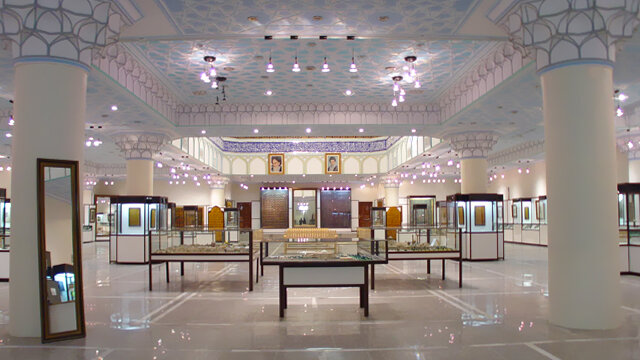Golestan Palace, Shah-Abdol-Azim shrine’s museum to hold joint exhibitions

TEHRAN –The UNESCO-tagged Golestan Palace in Tehran and the museum of the Shah Abdol Azim shrine in Rey plan to hold joint exhibitions and meetings, the director of the palace has said.
The connection between Golestan Palace and the museum is remarkable, with both hosting historical masterpieces that share commonalities and are interrelated, Afarin Emami explained on Monday.
Therefore, they have the opportunity to collaborate on joint exhibitions and cultural research activities, she added.
With a vast collection of Qajar period (1789-1925) artifacts in the museum, particularly those linked with the art, culture, and history of the famed Qajar king Nasser ad-Din Shah (1821-1896) era and Golestan Palace narratives, the decision was taken to organize focused gatherings and collaborative exhibitions to highlight this remarkable era, she noted.
A destination for domestic and international travelers, Golestan Palace is located in the heart and historic core of Tehran. The palace complex is one of the oldest in the Iranian capital, originally built during the Safavid dynasty (1501–1736) in the historic walled city.
Following extensions and additions, it received its most characteristic features in the 19th century, when the palace complex was selected as the royal residence and seat of power by the Qajar ruling family (1789-1925). At present, the Golestan Palace complex consists of eight key palace structures mostly used as museums and the eponymous gardens, a green shared center of the complex, surrounded by an outer wall with gates.
As mentioned by UNESCO, the complex exemplifies the architectural and artistic achievements of the Qajar era, including the introduction of European motifs and styles into Persian art.
The holy shrine of Shah Abdol Azim is located in the city of Rey, southeast of Tehran.
Rey was one of the capital cities of the Parthian empire (3rd century BC–3rd century CE) and it was captured by the Muslim Arabs in 641 CE. During the reign of the Muslim caliph al-Mahdi in the 8th century, the city grew in importance until it was rivaled in western Asia only by Damascus and Baghdad.
According to Encyclopedia Britannica, Islamic writers described it as a city of extraordinary beauty, built largely of fired brick and brilliantly ornamented with blue faience (glazed earthenware). It continued to be an important city and was briefly a capital under the rule of the Seljuqs, but in the 12th century, it was weakened by the fierce quarrels of rival religious sects. In 1220 the city was almost entirely destroyed by the Mongols, and its inhabitants were massacred. Most of the survivors of the massacre moved to nearby Tehran, and the deserted remnants of Rey soon fell into complete ruin.
ABU/AM
Leave a Comment